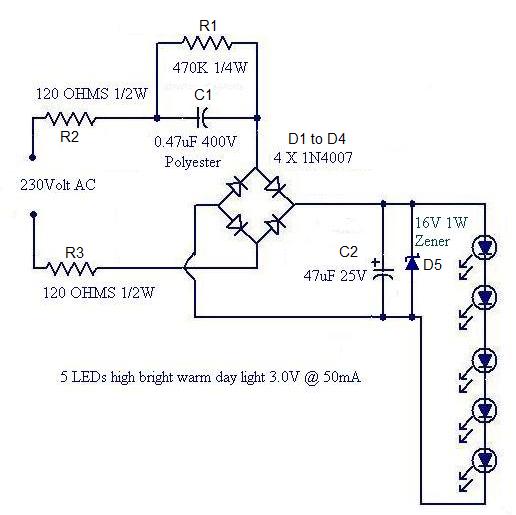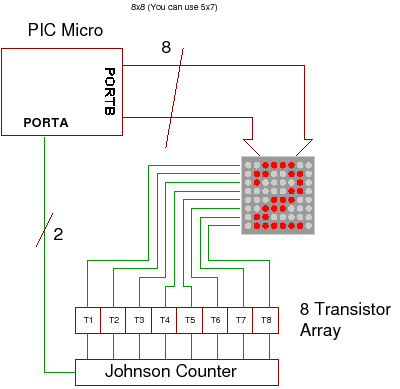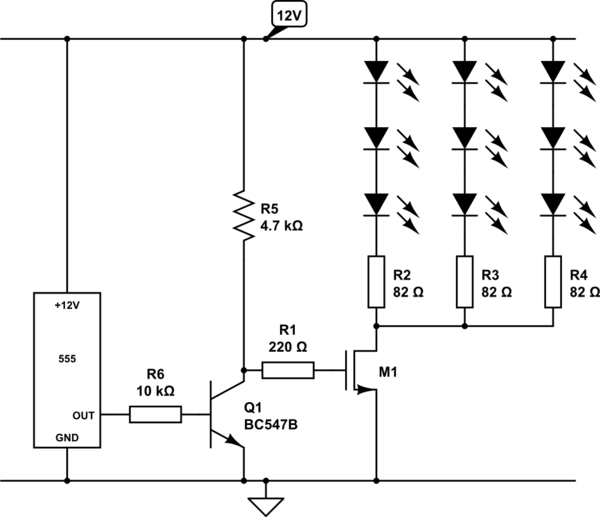
2SC1815 Flip Flop LED Flasher Suite

2SC1815 Flip Flop LED Flasher is a very simple and easy-to-understand circuit.
The 2SC1815 Flip Flop LED Flasher circuit utilizes a 2SC1815 transistor, which is a general-purpose NPN transistor, to create a basic LED flasher. This circuit operates on the principle of a flip-flop, which alternates the state of the output between on and off, causing the connected LED to flash.
The circuit typically consists of a few key components: the 2SC1815 transistor, resistors, capacitors, and an LED. The configuration includes a feedback loop that allows the circuit to toggle between two states. When powered, the capacitor charges through a resistor, and once it reaches a certain voltage, it triggers the transistor to switch on, allowing current to flow through the LED, causing it to illuminate. As the capacitor discharges, the transistor turns off, and the LED goes out.
To construct this circuit, the following steps are generally followed:
1. Connect the 2SC1815 transistor in a common emitter configuration.
2. Use a resistor to limit the base current and another resistor to set the collector current for the LED.
3. Include a capacitor between the base and collector to create the necessary feedback for the flip-flop operation.
4. Connect the LED in series with a current-limiting resistor to the collector of the transistor.
The frequency of the flashing can be adjusted by modifying the values of the resistors and capacitor used in the circuit. This simple design is ideal for beginners to understand the fundamentals of transistor operation and basic timing circuits. It can be used in various applications, such as visual indicators, decorative lighting, or as a teaching tool in electronics education.2SC1815 Flip Flop LED Flasher Suite A very simple and very easy to understand.. 🔗 External reference
The 2SC1815 Flip Flop LED Flasher circuit utilizes a 2SC1815 transistor, which is a general-purpose NPN transistor, to create a basic LED flasher. This circuit operates on the principle of a flip-flop, which alternates the state of the output between on and off, causing the connected LED to flash.
The circuit typically consists of a few key components: the 2SC1815 transistor, resistors, capacitors, and an LED. The configuration includes a feedback loop that allows the circuit to toggle between two states. When powered, the capacitor charges through a resistor, and once it reaches a certain voltage, it triggers the transistor to switch on, allowing current to flow through the LED, causing it to illuminate. As the capacitor discharges, the transistor turns off, and the LED goes out.
To construct this circuit, the following steps are generally followed:
1. Connect the 2SC1815 transistor in a common emitter configuration.
2. Use a resistor to limit the base current and another resistor to set the collector current for the LED.
3. Include a capacitor between the base and collector to create the necessary feedback for the flip-flop operation.
4. Connect the LED in series with a current-limiting resistor to the collector of the transistor.
The frequency of the flashing can be adjusted by modifying the values of the resistors and capacitor used in the circuit. This simple design is ideal for beginners to understand the fundamentals of transistor operation and basic timing circuits. It can be used in various applications, such as visual indicators, decorative lighting, or as a teaching tool in electronics education.2SC1815 Flip Flop LED Flasher Suite A very simple and very easy to understand.. 🔗 External reference





